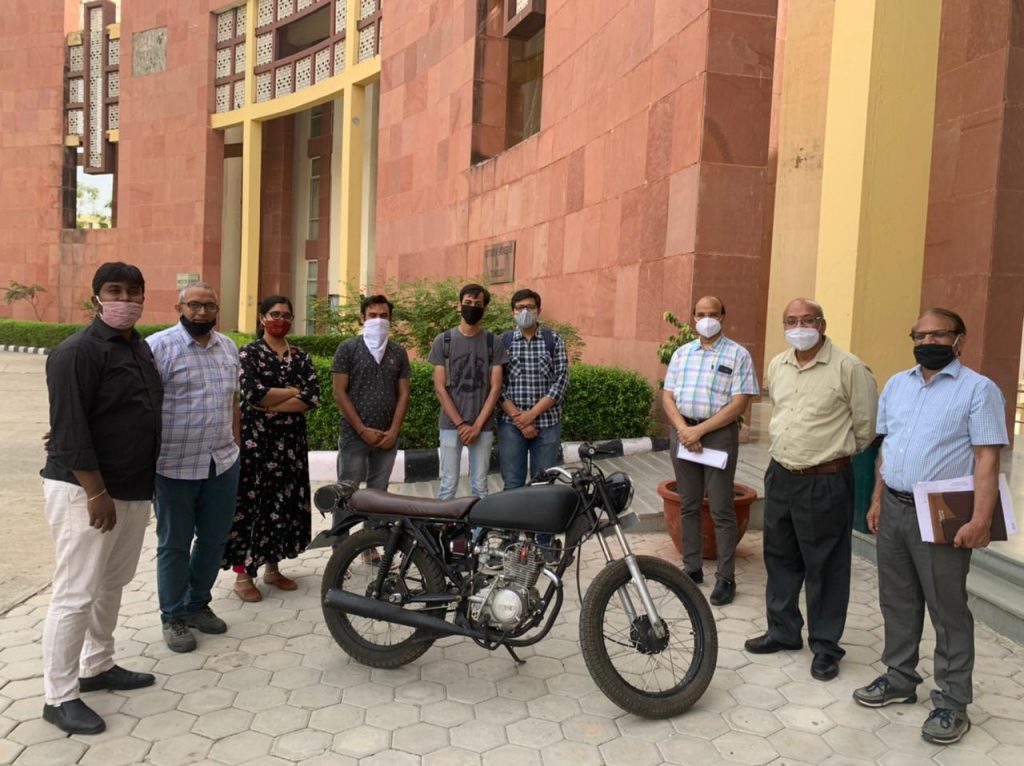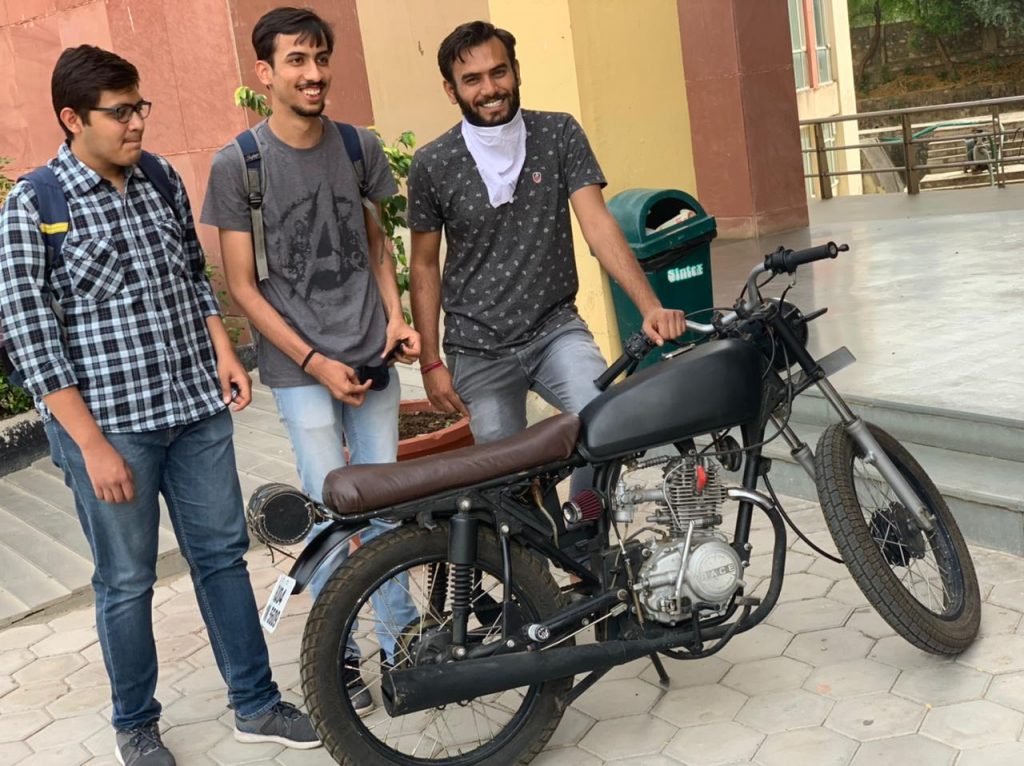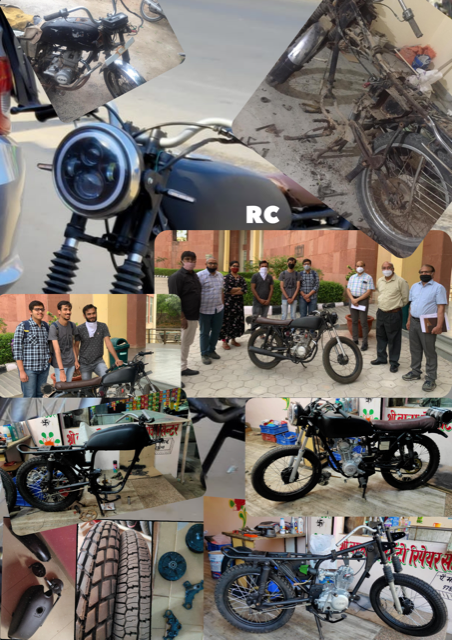A few Mechanical Engineering students of JK Lakshmipat University, have put forward a concept to reclaim scrap motorcycles and restore them to conditions compliant with today’s vehicular standards. This concept bears special value as it also intends to reduce pollution and manage waste.

Bike India interviewed the team that worked on the bike. The team is made up of five students: Ronak Singh, Abhimanyu Shankar, Anirudh Pareek, Piyush Singh Pawar and Prashant Chaudhary. They are currently in the third year of pursuing a degree in Mechanical Engineering from JK Lakshmipat University in Jaipur, Rajasthan.
Bike India: How did you come up with this idea?
Students: A few of us in the team stayed outside the campus and often experienced difficulty in finding transportation to and from college. Private means of transport are best suited for the location of our university so we began the search for a cheaper alternative to buying a motorcycle.
Having taken apart and then reassembled two motorcycles in the past, we decided that restoring a scrap bike to a level compliant with the present day’s vehicular standards would be the solution to our problem.

Bike India: How did the project start?
Students: When the pandemic struck, the university suspended classes and the students returned to their respective villages. Once back home, I (Ronak) visited a junkyard in Bilara town of Jodhpur district and bought a scrap bike for Rs 3,000. The worn-out motorcycle had nothing but the chassis, engine and shock absorbers. It was then transported to a location near the university in Jaipur. We received the support of a service centre that allowed us to use their space and equipment to perform the necessary restoration work on the motorcycle. The team fondly remembers the contribution of the owner of the service centre towards the project. He did not just lend us space and equipment but also guided the team whenever they needed help.
Bike India: What was the inspiration behind the build?
Students: We have always been interested in the customization of automobiles and we derive our inspiration from shows like Count Kustoms. The local custom shops in our village have also been an inspiration for us to set out on this journey.

Bike India: What were the main changes done to the bike?
Students: The engine was not in the best shape to begin with. It was a 2000 Bajaj Boxer and the carburettor was beyond repair so we had to change it. We made some aesthetic modifications to the structural design of the motorcycle to provide it with a new look.
Abhimanyu Shankar said they tried to give it a café-racer look which was a tough task to accomplish. “It was a challenge to make a 2000 model year motorcycle look competitive enough to match the style of today’s products. It took almost 18 days to completely restore the bike. We are also thinking of small aesthetic changes in the future. We are proud to be a part of this innovation,” he added.
Bike India: Are you planning to come up with new projects in the future?
Students: Yes, definitely. Reclamation of scrap motorcycles to reduce waste and pollution will be our main idea even as we go ahead. We are aiming to establish a start-up that focuses mainly on this work. We plan to take a step forward into the world of electric vehicles as well. We could source parts from scrap bikes and build an electric bike to stay committed to our cause of preserving the environment by reducing pollution. A project to build an electric bike from scrap is already underway and we are trying to get it ready as soon as possible. As of now, we are happy about our current project which we could complete despite the hurdles posed by the pandemic.
Also read: BS6 Benelli 502C India Launch
Story: Cherry Mathew Roy


Leave a Reply